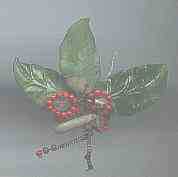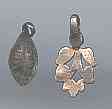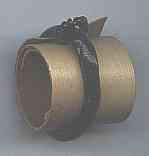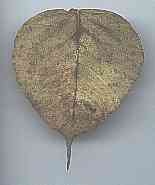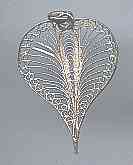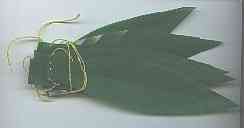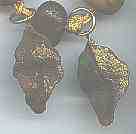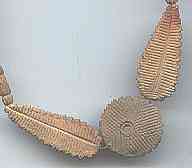The Bead Site Home>Beadmaking & Materials>Organic Materials> Leaves
Leaves and Human Adornment
For many years I have suggested that plants served as the first human adornments. At least that seems to have been the case in India, where most of the tribal groups (adavasis) wear plants to the near exclusion of other things. I pointed this out in the first scientific paper I ever read (Francis 1997; for those of who checked the reference, yes, it took them 17 years to publish it).
Some years later in Plants as Human Adornment in India (Francis 1984) fifteen leaves were identified as fulfilling this function (out of 169 plant species). They include well-known species such as teak, coconut and date palm, orchid, mango and banana. They were worn on garlands, through the nose, cut or wrapped as bracelets and for skirts.
The oddest entry is that in 1916 an Anglo-Indian team reported that Maria Gonds women wore only teak leaves. Twenty-two years later the Gonds laughed at the idea that anyone would be so poor as to wear leaves and denied it ever happened among them.
Leaves, of course, also serve as models for jewelry elements in other media.
|
Francis, Peter Jr.
1984 Plants as Human Adornment in India Economic Botany 38(2):194-209
1997 An Interdisciplinary Approach to the Question of Early Human Adornment in India. pp. 218-231 in V.D. Misra and J.N. Pal, eds. Indian Prehistory: 1980 Department of Ancient History, Culture an Anthropology, University of Allahabad, Allahabad, India.
_________________________________________________
Small Bead Businesses | Beading & Beadwork | Ancient Beads | Trade Beads
Beadmaking & Materials | Bead Uses | Researching Beads | Beads and People
Center for Bead Research | Book Store | Free Store | Bead Bazaar
Shopping Mall | The Bead Auction | Galleries | People | Events
The Bead Site Home | Chat Line | Contact Us | Site Search Engine | FAQ
